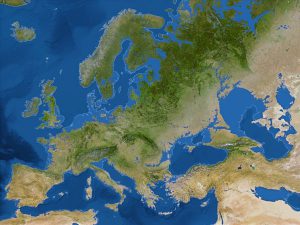 Washington, Feb 12: While ice sheets and glaciers continue to melt, climate change over the past decade has caused Earth’s continents to soak up and store an extra 3.2 trillion tons of water in soils, lakes and underground aquifers — temporarily slowing the rate of sea level rise by about 20 percent, scientists have revealed.
Washington, Feb 12: While ice sheets and glaciers continue to melt, climate change over the past decade has caused Earth’s continents to soak up and store an extra 3.2 trillion tons of water in soils, lakes and underground aquifers — temporarily slowing the rate of sea level rise by about 20 percent, scientists have revealed.
New measurements from a NASA satellite have allowed researchers from NASA’s Jet Propulsion Laboratory (JPL) in Pasadena, California and University of California-Irvine, to identify and quantify, for the first time, how climate-driven increases of liquid water storage on land have affected the rate of sea level rise.
“We always assumed that people’s increased reliance on groundwater for irrigation and consumption was resulting in a net transfer of water from the land to the ocean,” said lead author JT Reager of JPL.
“What we didn’t realise until now is that over the past decade, changes in the global water cycle more than offset the losses that occurred from groundwater pumping, causing the land to act like a sponge — at least temporarily,” he explained.
These new data are vital for understanding decadal variations in sea level change.
The information will be a critical complement to future long-term projections of sea level rise, which depend on melting ice and warming oceans.
The water gains over land were spread globally but taken together, they equal the volume of Lake Huron, the world’s seventh largest lake.
The 2002 launch of NASA’s Gravity Recovery and Climate Experiment (GRACE) twin satellites provided the first tool capable of quantifying land liquid water storage trends.
By measuring the distance between the two GRACE satellites to within the width of a strand of human hair as they orbit Earth, researchers can detect changes in Earth’s gravitational pull that result from regional changes in the amount of water across Earth’s surface.
With careful analysis of these data, JPL scientists were able to measure the change in liquid water storage on the continents, as well as the changes in ice sheets and glaciers.
“These results will lead to a refinement of global sea level budgets such as those presented in the Intergovernmental Panel on Climate Change (IPCC) reports,” noted JPL senior water scientist Jay Famiglietti.
The study, published in the journal Science, is the first to observe global patterns of changes in land water storage, with wet regions getting more wet and dry areas getting drier. (IANS)
